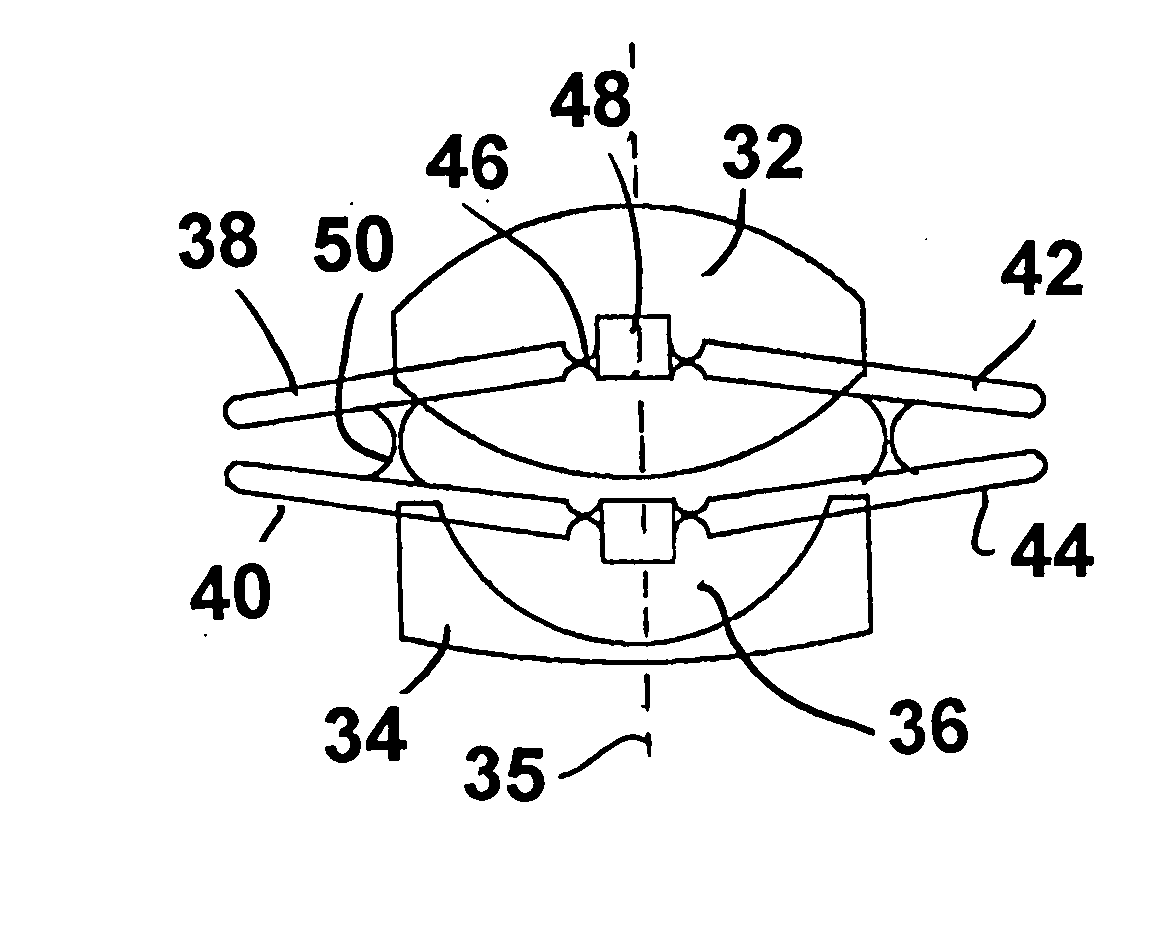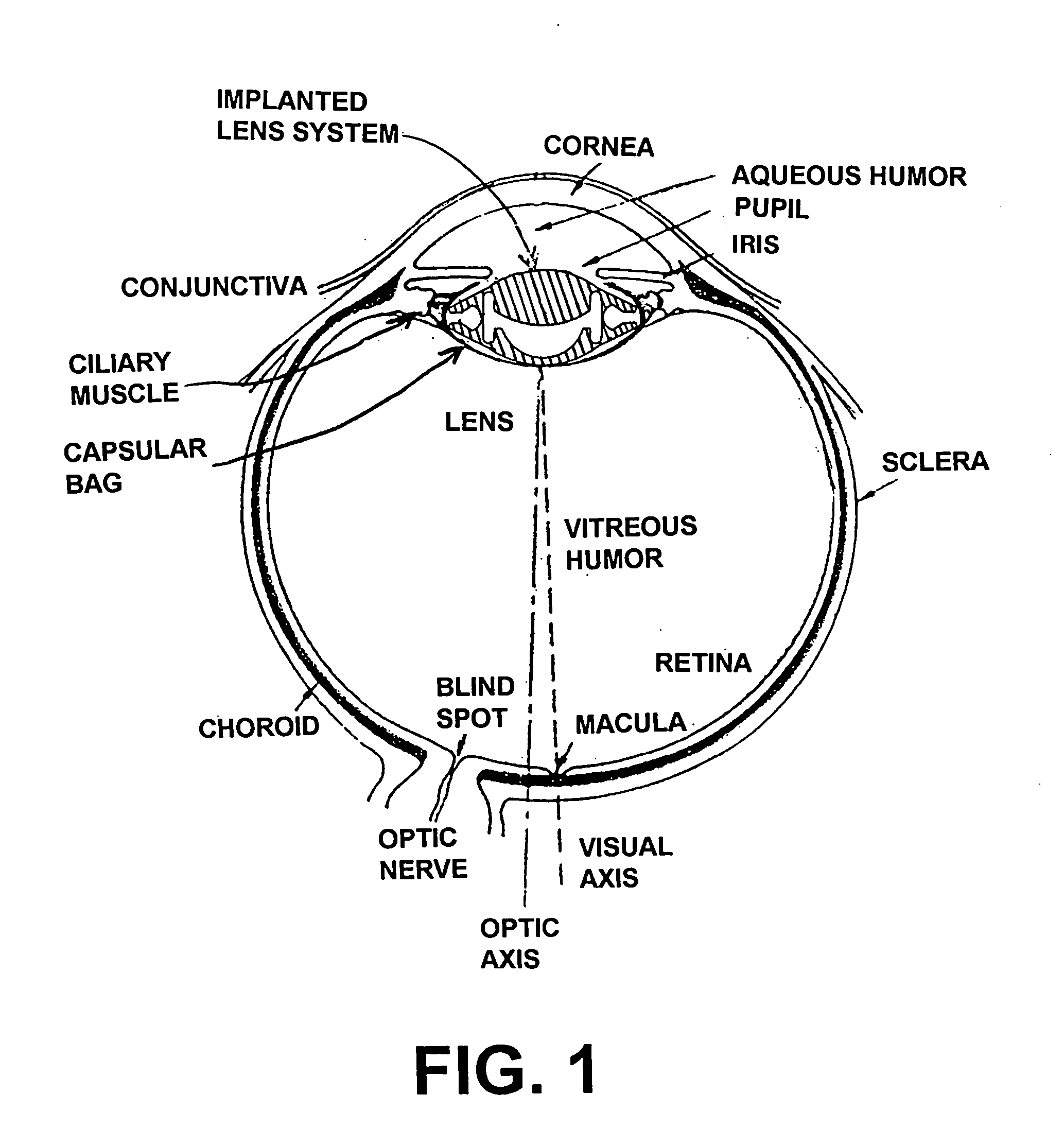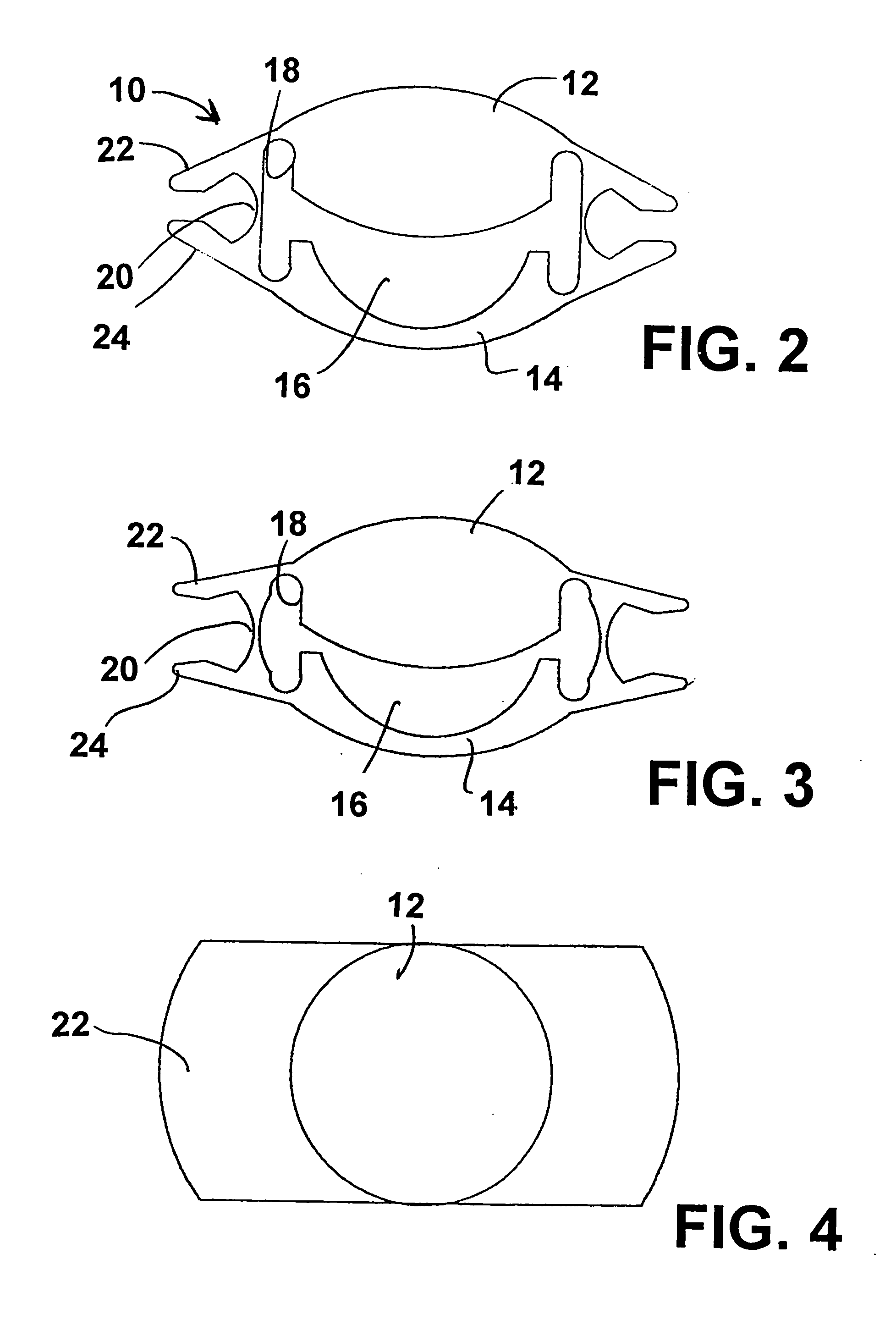High gain wide range accommodating intraocular lens for implant into the capsular bag
a wide-range, intraocular lens technology, applied in the field of intraocular lens implants, can solve the problems of low gain of simple convex lens, large distance the lens must be actually moved within the eye to achieve a large focal length change, and difficult at best to achieve accommodation for near vision. , to achieve the effect of large range adjustable focal length
- Summary
- Abstract
- Description
- Claims
- Application Information
AI Technical Summary
Benefits of technology
Problems solved by technology
Method used
Image
Examples
Embodiment Construction
[0029] Referring to the accompanying figures, and initially FIG. 1, it will be seen that in a human eye immediately behind the cornea, the aqueous humor and the pupil, there is a capsular bag attached to ciliary muscles. In a normal human eye, the capsular bag is filled with a crystalline lens which the bag fully encloses. However, in FIG. 1, it is assumed that the eye has undergone surgery to cut through a portion of the capsular bag and to remove the entire crystalline lens. A technical description of this type of eye surgery, which is commonly done to remedy the condition know as "cataracts", is provided in the aforementioned Cumming U.S. Pat. No. 5,674,282 which patent disclosure is incorporated herein by reference. It is further assumed that a lens system according to a preferred embodiment of the invention, has been installed into the capsular bag after the natural lens has been removed. It is further assumed that a portion of the capsular bag facing the cornea and immediately...
PUM
 Login to View More
Login to View More Abstract
Description
Claims
Application Information
 Login to View More
Login to View More - R&D
- Intellectual Property
- Life Sciences
- Materials
- Tech Scout
- Unparalleled Data Quality
- Higher Quality Content
- 60% Fewer Hallucinations
Browse by: Latest US Patents, China's latest patents, Technical Efficacy Thesaurus, Application Domain, Technology Topic, Popular Technical Reports.
© 2025 PatSnap. All rights reserved.Legal|Privacy policy|Modern Slavery Act Transparency Statement|Sitemap|About US| Contact US: help@patsnap.com



